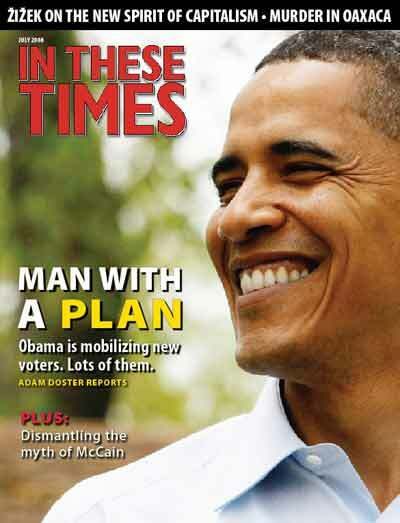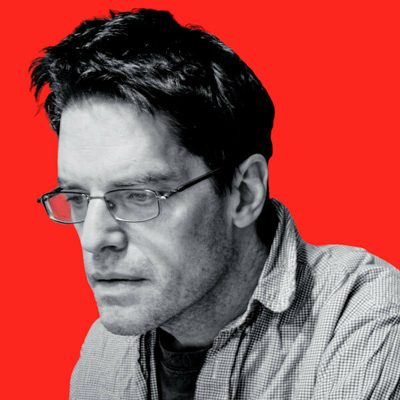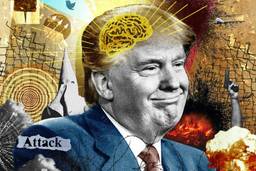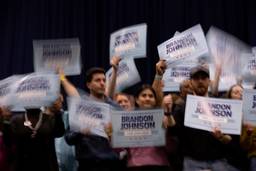
The Newseum, the latest addition to Washington’s sprawling, preening, self-singing monument-memorial complex, may boast a constitutional amendment engraved on its $450 million façade, and an outsized collection of press arcana, but it beckons to the visitor in the same fashion that the nightly news does to the suburban homeowner: You go downstairs and watch TV. Or rather, you begin your tour at the Hearst Corporation-sponsored Orientation Theater at the concourse level, opposite the Wolfgang Puck-catered food court.
However – since I follow directions poorly – I sit down in the wrong theater. It is showing a glowing retrospective on sports journalism, and it takes me some time to realize my error. The hero hymned on screen is Roone Arledge – the famous former director of ABC’s sports coverage, who seamlessly transitioned into the network’s news director. Perhaps, I think, we are watching the corporate-newsmasters-of-indeterminate-portfolio segment of the documentary “What Is News?”
However, after a verbally mangled paean to Arledge’s titanic genius – former ABC sportscaster Jim McKay says that “the words, ‘the thrill of victory and the agony of defeat’ ” (the slogan Arledge dreamt up for “ABC’s Wide World of Sports”) had “become, literally, part of our language” – we segue into a segment on how the Olympics makes news, and I sense a pattern emerging.
So I’m off to the real Orientation Theater, sure that it will divulge the real nature of news.
I am soon oriented toward the core belief that news is made up of mind-numbingly banal binary oppositions: Birth/Death; War/Peace; Hate/Love. On-screen commentators offer up similar anodyne formulas, as does our voice-over narrator, “CBS Morning News” anchor Charles Osgood. He strings together sonorous syllogisms that signify very nearly nothing, e.g. “Facts come first, then ideas, then ideals,” and “Information is where liberty starts.”
Such billowing wordplay isn’t coming across, literally, as part of our language. Still, as the lights come up, it sets off one nearby patron.
“I like how they have all this leftist propaganda,” sneers a guy in knee-length checkered shorts and a West Virginia baseball cap.
At the computer kiosk outside Orientation Theater it dawns on me that my pedestrian quest for literal meaning is missing the Newseum’s main point: It is not a memorial to news, or newsgathering, but, rather, a lavish, atrium-enhanced, multiscreen advertisement that extols slogans, personalities and – most of all – the concept of press ownership. For here at the touchscreen kiosk, visitors can imbibe every Hearst-branded celebration … of the Hearst brand. In a filmed statement, the company CEO praises his corporation’s excellent taste in partnering with the Newseum. A different button yields a tour through Hearst Corp.’s many media properties. Yet another gives a history of the company’s excellent track record of media consolidation.
Since I’m a former Hearst employee, I’m eager to see how the mother company – which in 2000 offloaded its flagship property, the San Francisco Examiner, six years after a bitter strike paralyzed it for months – is gilding its past for the Newseum crowd.
We learn that the company launched itself into the modern news era when media mogul William Randolph Hearst took control of the Examiner from his dad in 1887. We catch a discreet reference to the elder Hearst being elected to the U.S. Senate, but there’s little mention of William’s colorful political interests: his role plumping for the imperialist Spanish-American War, or his lengthy, vicious career as strike-breaker and Red-baiter.
Instead, we get a drumbeat recitation of the properties Hearst acquired, and the technological domains he conquered: “By the 1920s, Hearst had 28 newspapers nationwide.”
His papers were the first to feature color comics!
He bought up magazines by the bushelful!
Radio stations, too!
So it is throughout the Newseum’s 250,000 square feet of exhibition space. We see a distinct premium placed on the news industry’s largeness, and precious little recognition of its purpose.
Oh, there is, of course, plenty of First Amendment talk, and fond looks back at when journalists clashed with notions of executive branch prior restraint. But for all the heroic talk of the press’ role in preserving liberty and democracy, there’s no reckoning with the overtly political ends that a commercial press pursues.
Even less is there any examination of why we have a commercial press in the first place, or how frenetic consolidation of media properties disfigures the public’s stake in journalism.
When you take the elevator up to the fifth floor and work your way down the vast exhibition areas, for instance, you first encounter an exhibition on News History (mislabeled, in a Huxley-esque typo on a sign next to the elevator, “New History”). There, the kiosk-vertisement is for NewsCorp, which had the vision to grace the unsuspecting world with Fox News.
Guiding us through the many, many holdings of NewsCorp is Fox News correspondent Shepard Smith. He reports with the barest undertone of televisual-approved irony that he and the doltish “Simpsons” newsbot Kent Brockman are “employed by the same company.”
Then we get the same, potted history of Rupert Murdoch’s vulgar news-conquering ways that we saw in Hearstland: “It all began,” Shepard reverently intones, “with one man’s dedication to the news.” New History, indeed.
In the accompanying exhibit, we see many more broad-stroke slogans: “News Helps Incite Rebellion” for the Revolutionary War – a period safely distant enough in time for popular dissent to be treated as a virtue. For abolitionism, a strangely more detached slogan: “Slavery Divides a Nation.” By the onset of World War II, we are again at the point of bagginess-beyond-signification. “The Story of the Century Unfolds: War Was, and Is, Big News.” You don’t say.
Tucked into a back wall display there’s a small exhibit under the heading “Who Owns What”? Here we learn that “Mergers and Takeovers Create Multimedia Giants.” The explanatory text, like in many of the museum displays, is irritatingly highlighted in fake yellow marker, as if put together by a bored and distracted college sophomore. Here the discerning yellow mark falls on the did-you-know factoid that Disney, once known for cartoon renderings of cuddly mice, is today “a multimedia conglomerate that typifies the changing face of news media ownership.”
And how do such incongruities come to pass? Read on, dear visitor: “Today, chances are that your daily newspaper – once locally owned – is owned by a large company in a city many miles away. Likewise for your network television affiliates. Why? Because the news media yield profit and power.” You don’t say.
Elsewhere, the sophomoric highlighting becomes pernicious. In a look back at 19th century “Press Barons,” the highlighted text reads “Publishers and editors of the era could fight corruption and influence government policy.” That’s nice. But below, in unhighlighted, boring black-and white, we learn that “many of them used (or abused) that power to promote their own agendas.” A social universe, crammed into a two-word parenthetical.
That indignity was compounded by the aphorism our sophomore curator selected for the display, A.J. Liebling’s old saw about freedom of the press being guaranteed only to those who own one. This, so far as I could tell, was Liebling’s only appearance in the cavernous display areas – and small wonder, since he held all press owners and publishers in principled contempt. The place would have greatly benefited from his far sturdier aphorism about the press’ mission being to comfort the afflicted and afflict the comfortable, but perhaps the Newseum curators ran out of wallspace after carving “Free speech not only lives, it rocks!” – the sober appraisal of “television personality” Oprah Winfrey after her 1998 acquittal on libel charges when she dared cast doubt on the safety of the American hamburger.
The Newseum spectacle doesn’t end there, of course: A guard tower and cement segments of the Berlin Wall (Cold War makes news, too, you see); part of an immolated tower from the 9/11 attacks (“hate,” you recall, is part of what makes news); interactive studios where visitors can pretend to be newscasters. (Disclosure: My wife, the blogger formerly known as Wonkette, donated a pair of her slippers to the place. Curators asked for her pajamas, but she struck a rare blow for Newseum tastefulness in only vouchsafing them footwear).
Of the “4-D” time-travel movie through “the digital news stream,” the less said the better, save that candor compels me to report that the experience left me feeling no younger; indeed, quite the opposite.
No, the most lasting takeaway from my Newseum tour came the next morning, when I absently tuned in to ABC’s “This Week With George Stephanopoulos,” in masochist search of more election-driven pundit blather. I learned, to my shock, that the show is now permanently housed in the Newseum studio. To my further astonishment, after one commercial cutaway, we saw B-roll tape with the show’s logo emblazoned on a banner right next to the stone-carved rendering of the First Amendment on the facility’s only concrete exterior wallspace.
What is sponsoring what is, in other words, anybody’s guess.









